
SITF Submissions and Findings
The Species Identification Task Force receives submissions from orchid judging centers or exhibitors.

Specklinia costaricensis 'H.N.Y.' CHM 2026-01-18

Cranichis turkeliae 'Original' CBR 2026-01-17

Coelogyne spinifera Irene CBR 2026-01-17

Trichopilia peruviana Irene CBR 2026-01-17
Maxillaria chartacifolia 'Irene' CBR 2026-01-17

Bulbophyllum hians 'Tep Tep' -- Challenge CBR 2026-01-16

Bulbophyllum roseopunctatum Jim's Pink Lampshades AM--CHALLENGE 2026-01-16

Encyclia jenischiana 'Sasha' CHM 2026-01-13

Vanda Xena Lady Stella HCC--CHALLENGE 2026-01-11

Lepanthes victorgonzalezii 'Ranga's Sunset' CBR 2026-01-10
Finding
SITF confirms this plant as Lepanthes victorgonzalezii (Jan 2026). This plant matches the January 2024, Researchgate article, "Lepanthes victorgonzalezii" article by Holcomb. The Researchgate photos match this plant showing the sepals in translucent color, relative size, and shape, and the minute petal and lip as well.
Lepanthes zapotensis 'Ranga's Tangerine' CBR 2026-01-10

Lepanthes rubripetala 'Laura's Ruby' CBR 2026-01-10

Masdevallia ventricosa 'Michelle's Magic' CCM 2026-01-07
Finding
SITF has determined this plant to be Masdevallia nidifica (Yellow form), not M. ventricosa (Jan 2026). The key differences between M. nidifica and M. ventricosa are the sepaline tails; M. nidifica has very long and slender sepaline tails vs. shorter, thicker tails in M. ventricosa; this plant matches the longer, slender sepaline tails of M. nidifica. It closely matches the form and color of the prior awarded M. ventricosa 'Mellow Yellow', determined by SITF to be M. nidifica. This plant is also supported by several of the photos of M. nidifica in the orchidroots.com and matches Luer's line drawings for the species. Images of true Masdevallia ventricosa can be found on IOSPE.
Stelis butcheri 'Cordelia' CBR 2026-01-04

Lepanthes attenboroughii 'Real Deal' CBR 2025-12-31
Finding
SITF confirms this plant as Lepanthes attenboroughii (Jan 2026). This species is similar to L. caprimulgus. The differences between L caprimulgus and L. attenboroughii are subtle. They differ in the more horizontal stance of the flower on the inflorescence on L. attenboroughii, whereas in caprimulgus they are more vertically presented, and the apical reflexed portion of the synsepal on L. attenboroughii is relatively long whereas in caprimulgus it is quite a bit shorter. A description and comparison with L. caprimulgus may be found in the Phytotaxa article abstract on-line, "A Remarkable New Lepanthes Hidden in Plain Sight" by Justin Yeager et.al. "L. attenboroughii shows rounder flowers when compared to the longer, tubular flowers with a narrowing of the sepaline cup towards the middle of L. caprimulgus with flowers reminiscent of a peanut."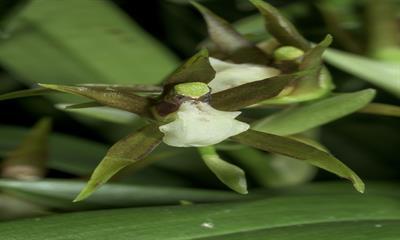
Brassia bennettiorum 'Irene' CBR 2025-12-29
Finding
SITF confirms this plant as Brassia bennettiorum (Jan 2026). It is the only species of the former Genus Ada with hornlike projections sticking up near the edges of the lip. The flowers of B. bennettiorum closely resemble Brassia euodes; however the number of flowers per infl (~3) and the infl. length (12 cm) of this plant better fit B. bennettiorum. Also, this plant better matches the lip form of B. bennettiorum which differs from Brassia eurodes.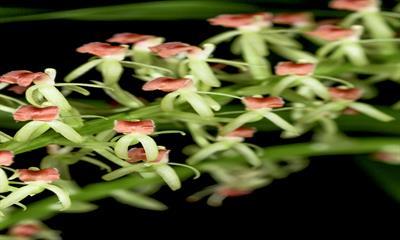
Liparis bicolor 'Irene' CBR 2025-12-29
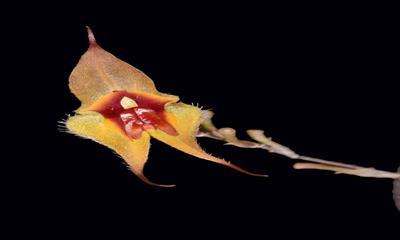
Lepanthes dactylopetala 'Pleurothallidan' CBR 2025-12-27

Maxillaria dressleriana 'M & B' CHM 2025-12-25

Epidendrum rhyzomaniacum 'Maryanne Jarvis' CBR 2025-12-24

Oncidium robustissimum 'Orkiddoc' HCC 2025-12-23
Finding
SITF has determined this plant to be Trichocentrum divaricatum (Jan 2026). Oncidium robustissimum is considered to be a synonym of T. divaricatum by Kew POWO. The flower size and form matches T. divaricatum. It also matches the images of T. divaricatum in Mark Chase's Pictorial Oncidium Book. This plant is a very close match to the photo of T. divaricatum as Oncidium robustissimum in the IOSPE.
Thecostele alata 'Louisiana' HCC 2025-12-20
Finding
SITF confirms this plant as Thecostele alata (Dec 2025). The species was named for the wings on the column which can be prominently seen on this plant. This plant also matches the photos on Kew/POWO and other photos in the IOSPE and multiple plants of T. alata the orchidroots.com. There is one other species recognized in the genus, Thecostele maingayi, which does not match this plant.
Bulbophyllum odoratum var. obtusisepalum 'Micheline Fabre' CHM 2025-12-20
Finding
SITF confirms this plant as Bulbophyllum odoratum var. obtusisepalum (Jan 2026). Bulbophyllum odoratum var. obtusisepalum, which Kew POWO considers synonymous with Bulbophyllum odoratum, was validly published in Blumea 5: 748 in 1945 and therefore can be used in the identification. The difference between the variety and the type is in its short, stubby (obtuse) sepals. The type has elongated, narrowly pointed sepals, creating a distinctly different image. Vermuellen's 2011 "Orchids of Sulawesi" show photos of B. odoratum as well as on the IOSPE, OW and Orchidroots. This species should not be confused with Bulbophyllum odoratissimum (Sm.) Lindl. ex Wall, which has an umbellate inflorescence.
Epidendrum wrightii 'Elizabeth Hamilton' AM 2025-12-20

Polystachya dendrobiiflora 'Jardin botanique de Montréal' CCM 2025-12-19

Micropera utriculosa 'Jardin botanique de Montréal' CCM 2025-12-16
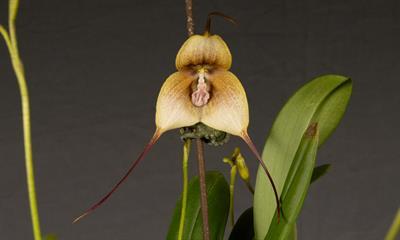
Dracula aphrodes 'Mary's Peak' HCC 2025-12-09
Finding
SITF confirms this plant as Dracula aphrodes (Jan 2026). This plant matches the species D. aphrodes morphologically. It matches the Luer & Escobar drawing and photos in the IOSPE. This verification was added to validate the previous AOS award which did not have validation from a taxonomic authority or SITF.Meiracyllium gemma 'Bill Bartlett' CBR 2025-11-27
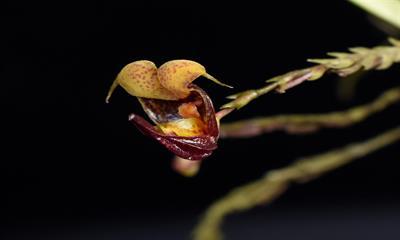
Scaphosepalum anchoriferum 'Dayana' AM 2025-11-26
Finding
SITF confirms this plant as Scaphosepalum anchoriferum (Jan 2026). This plant matches the Ecuadorean form of the species as found in the IOSPE and on-Line in Lankesteriana, "Scaphosepalum luannae, a new species, and Scaphosepalum anchoriferum (Orchidaceae: Pleurothallidianae) from north-western Ecuador". It also matches many of the images in the orchidroots.com. The species is variable in both form and color.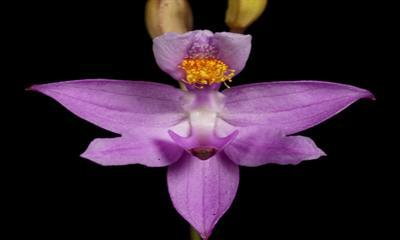
Calopogon barbatus 'Ranga's Bubble Gum' CHM 2025-11-26
Finding
SITF confirms this plant as Calopogon barbatus (Jan 2026). The plant is an excellent match to the photos of C. barbatus in the POWO and the IOSPE. It is supported by photos in the orchidroots.com. The flower size is in range and it matches the Description, drawing and key in Luer's "The Native Orchids of Florida" with the Dorsal sepal less than 2 cm long and the petals widest below the middle. It is similar to C. tuberosus, but smaller in plant size and flower size.
FREE ACCESS: Orchid DealWire
Get notified when orchid vendors have special promotions and exclusive savings.







